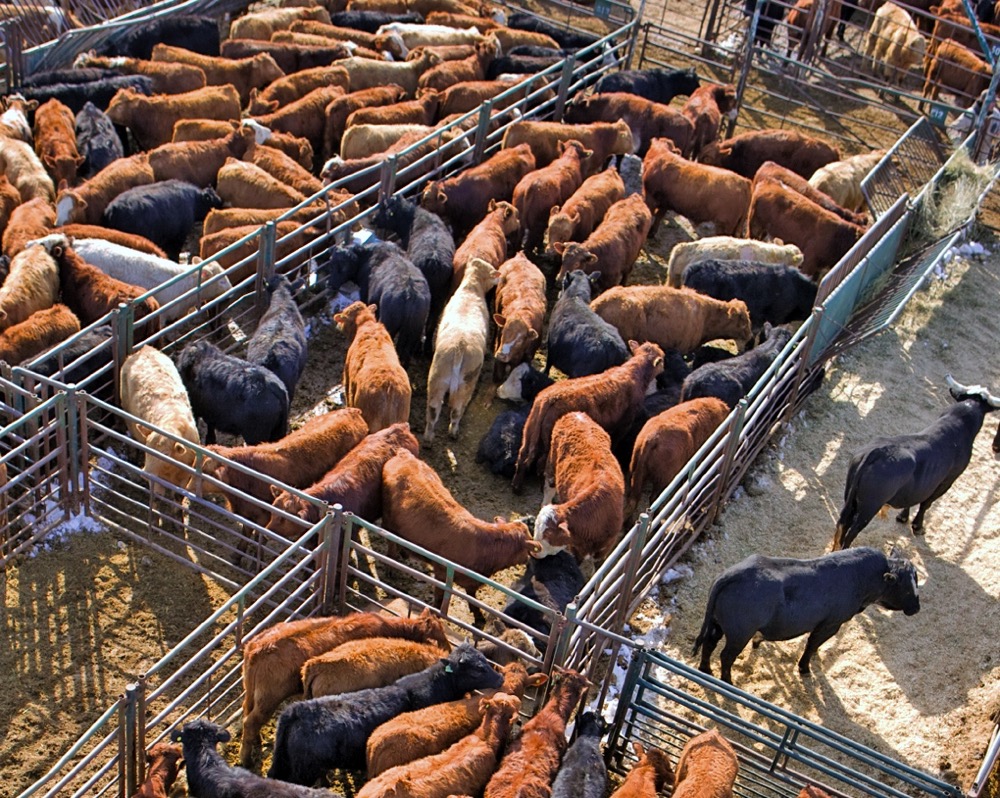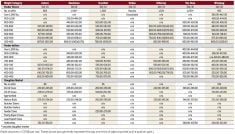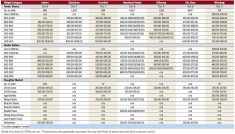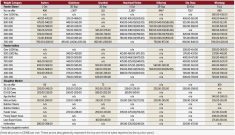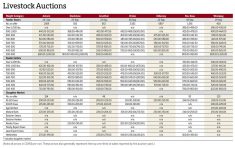Just a few auction yards remain open in Manitoba as ranchers enter the summer season. About 640 head were shown to buyers during the week ended June 30, down from 827 the previous week. Of the three major outlets still operating in July, just two held sales.
According to Rick Wright of Heartland Order Buying Co., roughly two-thirds of the animals sold were either culled cows or bulls. “So we’re seeing very few feeder cattle coming to the market,” he said.
Prices ticked higher for lightweight feeder steers, with animals weighing 400-500 lbs. drawing bids roughly $5 per hundredweight higher than the week before.
Read Also
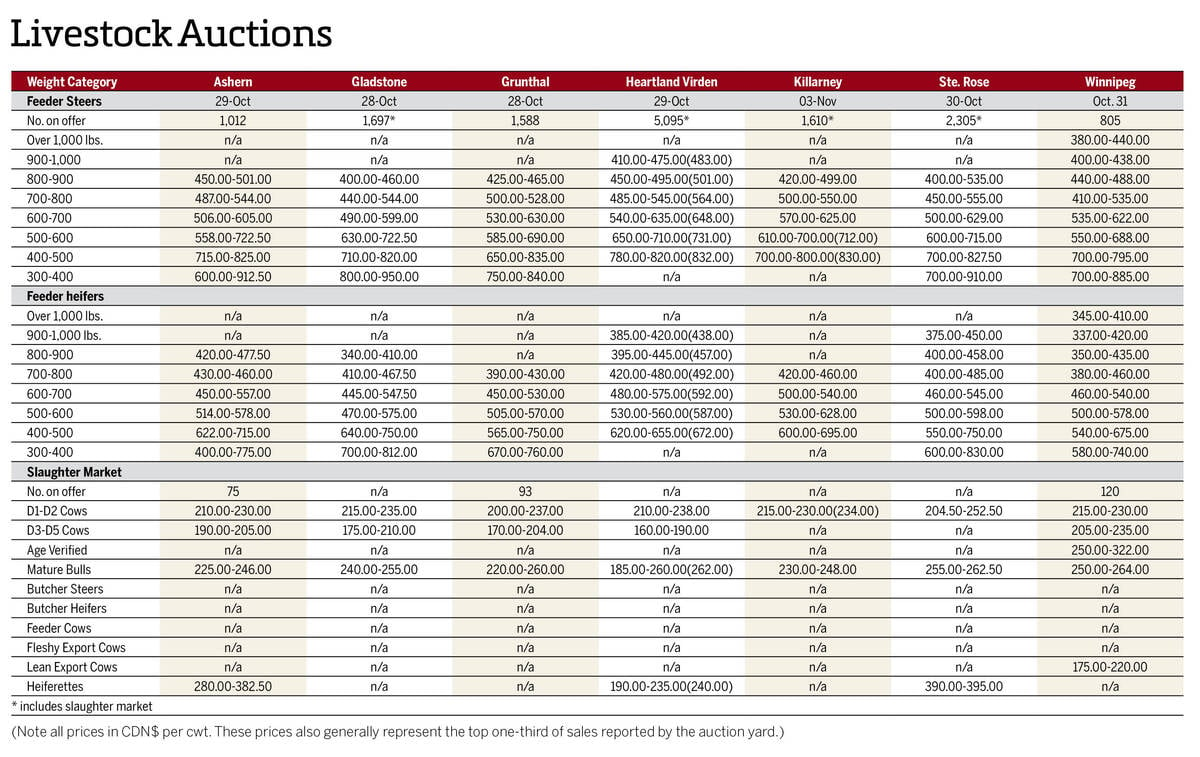
Manitoba cattle prices, Nov. 4
Manitoba cattle sale prices for the week of Oct. 28 to Nov. 4, 2025.
However, heavier-weight steers were slightly lower. Animals weighing 800-900 lbs. were about $5/cwt lower than the previous week.
“The market is steady to strong on grass-type cattle,” said Wright. “Now that we’ve got some moisture in Manitoba you can go back out to the pasture.”
The finished and fed cattle trade has seen “significant” losses on the cash market over the past two weeks, he added.
“There’s more supply of fed cattle than the demand can handle,” he said. “So they don’t have to reach out too far to get them bought.”
Buyers are more willing to buy some more cattle on pasture, he added.
“We’re still seeing good demand for cow-calf pairs and bred cows,” he said. “That’s local demand in Manitoba.”
The feed situation in Manitoba still looks OK, according to Wright, pointing to large carry-over from last year as a supporting factor. Also, scattered showers and warm temperatures have helped producers make some hay.
“The hay crops aren’t quite as good as we hoped but they’re looking better than they were three to four weeks ago,” he said.
Feed prices in the U.S. could be rising soon, as dry weather in the U.S. northern Plains has badly stressed the wheat crop. As well, dominant contracts in both the soymeal and corn markets at the Chicago Board of Trade rose over three per cent on Friday.
In the U.S., the market is preparing for a slower stretch, as demand for beef typically dies down after the Fourth of July holiday.
The market has been trending downward in recent days. Beef prices in the U.S. were down 11 per cent since mid-June.


